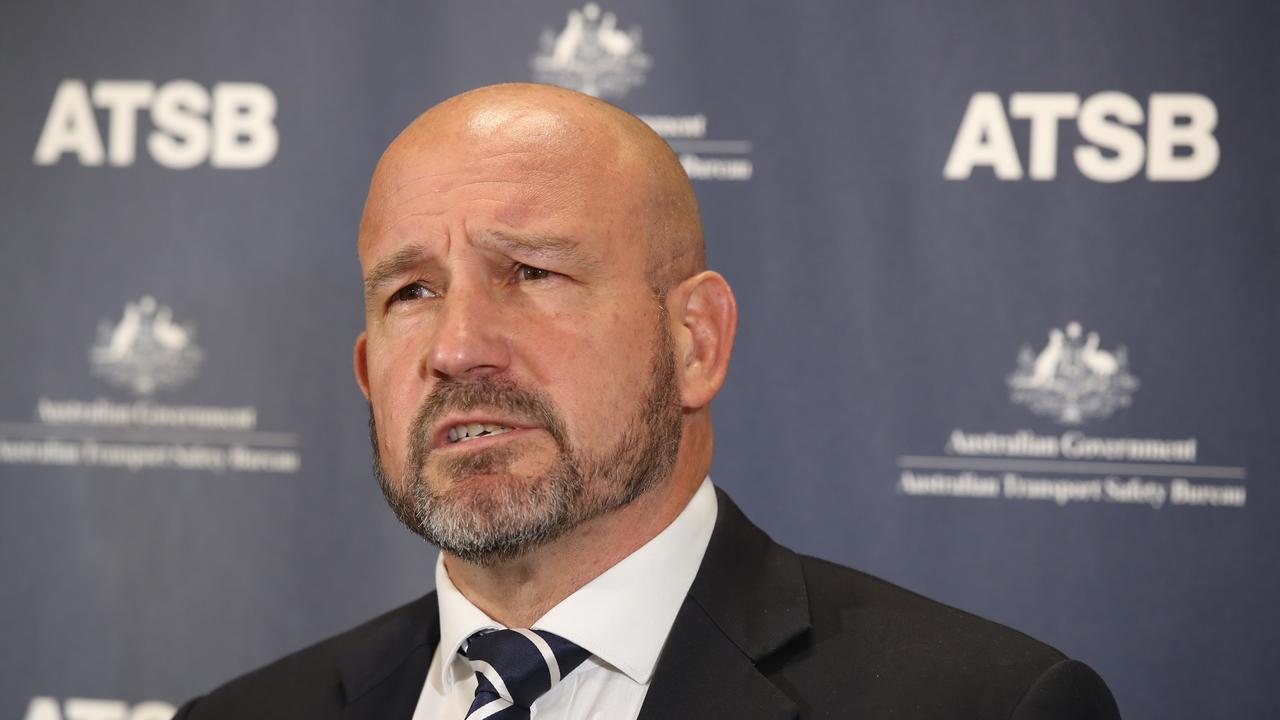Australian Transport Safety Bureau to release key report into Sea World Helicopters disaster
Investigators into the shocking Gold Coast helicopters disaster have revealed new details of the extraordinary evidence being collected for the probe, which is set to be made public within days.
QLD News
Don't miss out on the headlines from QLD News. Followed categories will be added to My News.
New evidence in the horrific Gold Coast helicopter tragedy will be released within days as the anniversary of the disaster looms.
It is almost 12 months since four people died and nine others were injured in a shocking collision between two helicopter joy flights over the Gold Coast Broadwater and after hundreds of hours of analysis and interviews with more than 80 witnesses including crash survivors, the Australian Transport Safety Bureau is set to release its interim report on Tuesday.
The exhaustive ATSB investigation, which includes harrowing video footage from mobile phones of the victims retrieved from the Broadwater by police divers, is also using state-of-the-art 3D computer technology to recreate the circumstances of the tragedy, with findings and conclusions due to be handed down mid-year ahead of a coronial inquest.

The ATSB released an initial summary of the disaster in March, essentially providing a timeline of the January 2 tragedy, which involved two joy flight choppers from Sea World Helicopters.
That report produced some concerning evidence, including suggestions the two pilots may have been ‘flying blind” and that there had been no communication with each other in the lead-up to the tragedy.
A helicopter operated by pilot Michael James was returning from a five-minute flight when it was involved in a collision with a flight headed by Sea World Helicopters chief pilot Ash Jenkinson just 23 seconds after it took off.
Mr James has been lauded for managing to safely land his badly-damaged helicopter on a nearby sandbank with all occupants able to walk away, but Mr Jenkinson’s chopper virtually fell from the sky, slamming into the Broadwater at the edge of the sand bank.
Mr Jenkinson died at the scene, along with Sydney mum Vanessa Tadros and British tourists Ron and Diane Hughes.
Mrs Tadros’ 10-year-old son Nicholas survived, along with Geelong woman Winnie de Silva and her nine-year-old son Leon.

The three survivors from the doomed chopper are among more than 80 witnesses to provide statements to ATSB investigators, who have also poured through hundreds of hours of footage and flight logs stretching back months before the accident to examine the operating procedures of Sea World Helicopters.
Speaking exclusively to The Sunday Mail, ATSB Chief Commissioner Angus Mitchell said it had been one of the most complex investigations in the agency’s history.

“That evidence is not just for the flight involved – we’ve gone back many months and we’ve looked at hundreds of hours of footage of other flights that were involved in this particular operator to try and get a better understanding of what was their standard practise, were things sufficient,” he said.
“We are looking at the whole picture here, so what occurred not only in those seconds leading up to it, but equally in the days and the months preceding that to see around the operation, around the training, around the airspace control, all of those things will fall part of our final report.
“It really has been unprecedented in the nature of the type of evidence available.
“Quite often when we investigate, we’re investigating in very remote parts of the country, quite often we have no survivors in many instances, we have no recorded detail and we’re still trying to recreate an accident and understand what occurred.
“In this particular instance, we’ve had well over 80 witnesses to this event, and that’s witnesses inside both of the helicopters at the time, plus the surviving pilot.
“A complex investigation like this that is hundreds of hours of work across multiple people, we have to get it right.”
More Coverage
Originally published as Australian Transport Safety Bureau to release key report into Sea World Helicopters disaster





